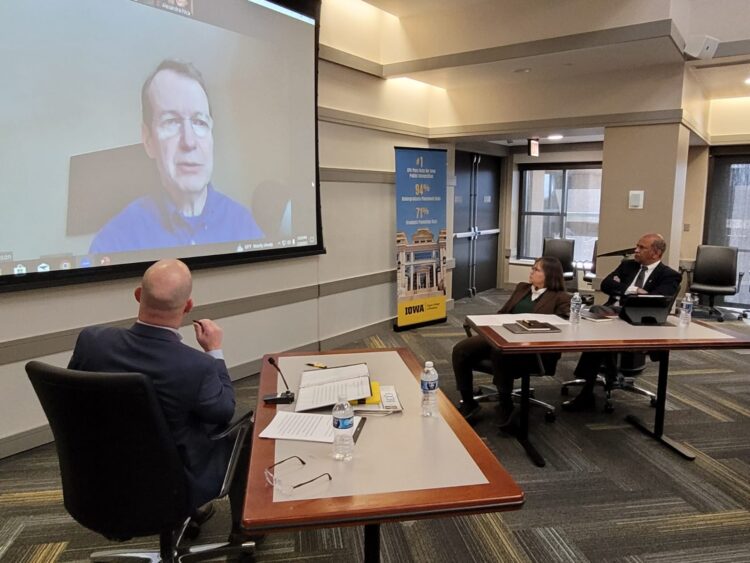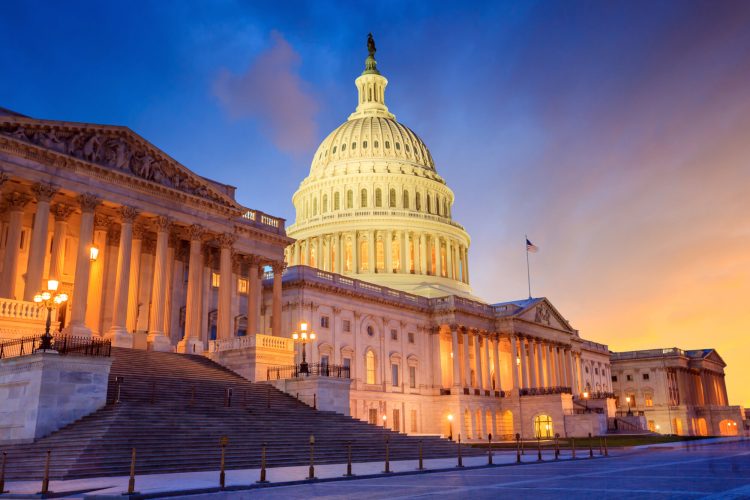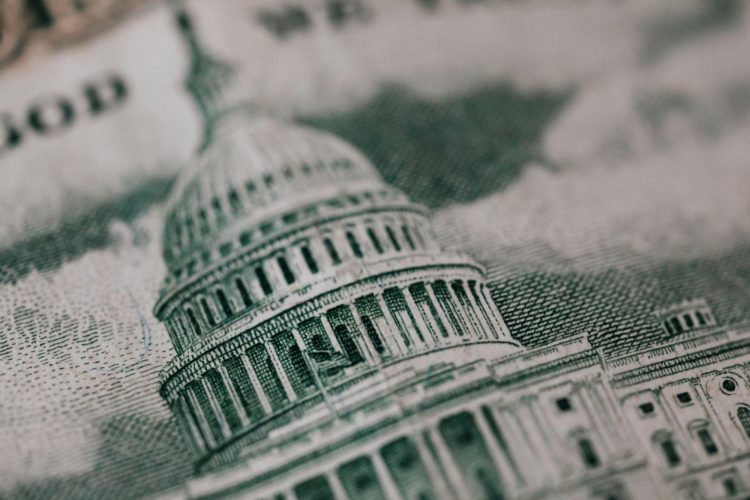
This week on Facing the Future, we got a perspective on America’s fiscal and economic challenges from Iowa City, Iowa. That’s home to the University of Iowa Tippie College of Business. Concord Coalition national field director Phil Smith and communications director Av Harris spent a couple of busy days on campus, speaking to hundreds of students, running the Principles and Priorities federal budget exercise, and rounding out their visit with a panel discussion featuring two economic scholars from the Tippie School and Concord’s chief economist Steve Robinson.
The two economists from the Tippie School include: Professor Anne Villamil, who teaches both macro and micro economics, and Professor Ramji Balakrishnan who teaches accounting and focuses much of his research on lowering healthcare costs. The forum began with a budget and economic overview by Phil Smith covering current federal budget projections for the deficit and the economy, plus major demographic changes over the next decade. The panel discussion was moderated by John Lohman, founder and editor of the Corridor Business Journal, an Eastern Iowa regional business and economic publication.
Professor Villamil started the discussion by giving an economic overview, looking at current trends and long-term challenges.
“Inflation has been building for a while, and the banking crisis is an unwelcome recent development, which appears to be getting under control,” said Villamil. “A recession continues to be an open question. We talk about it – it hasn’t happened yet, and we are not in a recession. We probably won’t see one for the next few months at least, but there are concerns about recession or what we call a soft landing from bringing down inflation. The labor market continues to be a source of interest, in the sense that unemployment is 3.6% which is historically low, but labor force participation – that is, people who are in the labor force – has not fully recovered from the COVID crisis. And that is concerning, because it affects firms’ profitability and our ability to produce GDP (Gross Domestic Product). In the long run, there are very serious concerns about fiscal policy – taxes, spending, deficits and debt and the so-called debt ceiling, and there are serious concerns about demographics. More retirees, and fewer workers to produce things.”
On the topic of the debt ceiling, Concord chief economist Steve Robinson broke down what the current fight is about between the Biden administration, that wants a clean bill to raise the debt limit and allows the federal government to pay existing bills , and House Republicans who want such a bill tied to an agreement to make (so far) unspecified spending cuts. Robinson, who has worked on Capitol Hill during many fights over the debt limit, says this game of chicken has actually been periodically played for decades.
“In Congress, you don’t want to be responsible for the President of your party having defaulted on the debt. We raised the debt limit a couple of times when President Trump was in office and the Republicans all mostly voted for it. Now that President Biden’s in office, the Republicans are saying no you can’t do this. So it’s largely politics and it’s unfortunate,” said Robinson. “But at the same time, what you’ve seen happen in the past is that this is a point of leverage. Government is at some deadline, and it creates an inflection point or a pressure point, where you can gain something you otherwise might not be able to do. Both parties have used the debt limit as a vehicle to pass other types of legislation. Sometimes they insist on spending cuts, you go back to the 1980s and there was a law called Gram-Rudman that was supposed to help balance the budget. If you go back far enough to 1972 there was a major expansion of the Social Security program that was attached to a debt limit bill in the Senate.”
With the Treasury Department’s extraordinary measures in place, Congress and the Biden Administration have a temporary solution to avoid exceeding the debt limit, and it may or may not get us past July or September. But as professor Villamil pointed out during the panel discussion, even coming close to defaulting on federal debt payments can have negative consequences, even if a deal is reached at the 11th hour.
“The stakes are very high here. The worst case is very serious – a global financial crisis. It’s not just the United States,” said Villamil. “The American dollar and the United States underpins the world economy. I hope that it will not happen, and I don’t foresee it happening. But it really does concern me that we would even discuss such a thing. I understand the bargaining part of it, but the US needs to be a good steward not only of its own economy, but of the world economy. We’ve been here before, so that’s why we will get out of this. But the US did threaten to default in 2011. We were two days away from it, and it led to a downgrading of US credit. That’s not something that should happen, and we don’t want that to happen, particularly when we have these high interest expenses.”
Another key topic of discussion is growing healthcare costs, which are simultaneously putting a drag on economic growth and significantly contributing to annual budget deficits through programs such as Medicare, Medicaid, and the state healthcare exchanges under the Affordable Care Act. Professor Ramji Balakrishnan says while healthcare spending is expected to climb from its current level of 33% of the federal budget to 40% by 2040, there are some real practical challenges to managing cost.
“Healthcare is a fairly unusual kind of a good in the sense that this is stuff that we buy that we use without knowing what the price is going to be. We get the price breakdown two and three months later, and we have no idea what it is that we want, but it is immensely critical to us,” said Balakrishnan. “So healthcare is not something that we can use the usual techniques to try and control cost, particularly when it comes to hospital costs and physician costs. There are two fundamental problems that get in the way. The first is measurement. Even figuring out what things cost is an incredibly difficult challenge in healthcare. Nobody in a hospital can tell you what a knee replacement costs, because it varies across hospitals, individual surgeons, and depends upon the patient, so we just make a guess as to what things cost. More importantly, there are very conflicting incentives. The doctors who make decisions that determine what the cost is going to be have no incentive to try and reduce the cost. Their focus is on patient care, and that’s where I think their focus should be, whereas the hospital is saying, no, try to manage the cost so we can stay under the reimbursement. The insurance company is saying something different altogether.”
You can see video of the entire panel discussion in Iowa here.
Hear more on Facing the Future. I host the program each week on WKXL in Concord N.H., and it is also available via podcast. Join our guests as we discuss issues relating to national fiscal policy with budget experts, industry leaders, and elected officials. Past broadcasts are available here. You can subscribe to the podcast on Spotify, Pandora, iTunes, Google Podcasts, Stitcher, or with an RSS feed. Follow Facing the Future on Facebook, and watch videos from past episodes on The Concord Coalition YouTube channel.
Continue Reading











